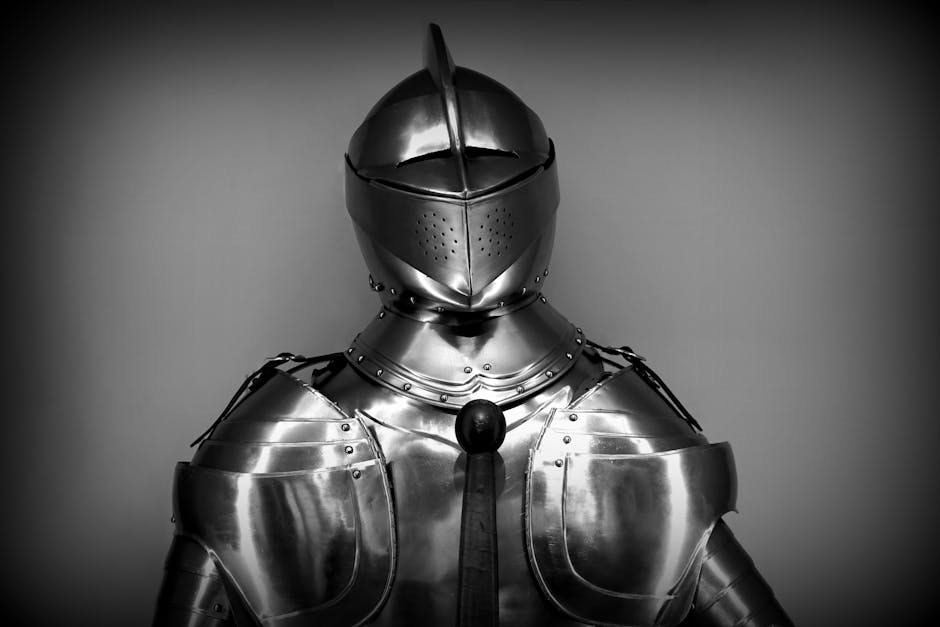What Are Trauma Shears For? Your Essential Guide
Trauma shears are a critical tool in the arsenal of medical, emergency, and tactical professionals. Known for their distinctive angled blades and sturdy handles, these shears are specifically designed to make *quick* and **precise cuts** through a variety of materials. Whether you're an EMT on the scene of an accident, a nurse in a bustling emergency room, or a military medic in the field, trauma shears play an indispensable role.
The primary purpose of trauma shears is to **cut through clothing, bandages, and other obstructions** to gain access to wounds or injuries. Their unique design allows them to cut through tough materials like denim, leather, and even thin metal, making them invaluable in situations where every second counts. In addition to their cutting capabilities, trauma shears are engineered for durability, ensuring they remain sharp and reliable even after repeated use.
But what exactly sets trauma shears apart from regular scissors or other cutting tools? The answer lies in their **ergonomic design** and **specialized construction**. The angled blades help in applying the right amount of leverage, while the blunt tip ensures that the patient is not accidentally injured during use. Moreover, the handles are often made from high-impact plastic, providing a comfortable grip even in wet or slippery conditions.
For more information about the importance and uses of trauma shears, visit our website at www.oneshear.com.
Primary Uses of Trauma Shears

Trauma shears are invaluable in various scenarios, particularly in *emergency* and **medical settings**. Their primary uses extend beyond simple cutting tasks, making them a versatile tool for professionals who need to act swiftly and efficiently.
One of the main functions of trauma shears is to **cut through clothing** to expose wounds or injuries quickly. In emergencies, it's crucial to access an injury site without causing further harm or delay. Trauma shears can easily slice through thick fabrics, including denim, leather, and even uniforms, allowing first responders to assess and treat injuries promptly.
Another critical use is in **removing bandages and medical dressings**. Trauma shears are designed to cut through adhesive materials without sticking, making it easier to change dressings and access wounds for cleaning or further treatment. This is particularly important in wound care, where minimizing discomfort and preventing additional trauma to the patient is essential.
In tactical environments, such as military or law enforcement operations, trauma shears are often used to **cut through restraints** like zip ties or duct tape. This capability can be life-saving in situations where speed and precision are necessary to free an individual from a potentially dangerous predicament.
Beyond these primary uses, trauma shears are also effective in cutting through **seat belts** during vehicle extractions, **splints** and **casts** in orthopedic settings, and even **thin metal wiring** when other tools are not available. Their versatility and reliability make them an indispensable tool across various fields.
Key Features of Quality Trauma Shears

When selecting trauma shears, it's essential to consider the **key features** that distinguish high-quality tools from standard ones. These features ensure that the shears perform effectively under pressure and withstand the demands of critical situations.
One of the most important features is **durability**. Quality trauma shears are typically made from **stainless steel**, which resists rust and corrosion, ensuring longevity. The blades should be sturdy enough to cut through various materials without bending or dulling quickly. Some premium models even incorporate titanium coating for enhanced strength and durability.
**Precision** is another crucial aspect. The blades should be sharp and aligned correctly to provide clean cuts without snagging. The design often includes a micro-serrated edge that prevents slippage and offers better control when cutting through tough fabrics or materials. This feature is particularly valuable in emergency scenarios where precise cuts are necessary to avoid further injury.
**Ergonomics** cannot be overlooked. High-quality trauma shears are designed with user comfort in mind. Look for features such as **contoured handles** that fit comfortably in the hand and reduce fatigue during prolonged use. Some models also include **soft-grip inserts** for added comfort and control.
A useful addition to consider is the **blunt tip**. This safety feature prevents accidental punctures when cutting close to the skin, making it safer for both the patient and the user. It is especially important when dealing with delicate procedures or when working in confined spaces.
Lastly, many top-tier trauma shears come with **additional functionalities** like built-in oxygen tank wrenches or carbide glass breakers. These multi-functional tools add value by providing more utility in a single compact device, making them indispensable in both medical and tactical settings.
In summary, when choosing trauma shears, prioritize **durability**, **precision**, **ergonomics**, **safety features**, and **additional functionalities** to ensure you have a tool that meets the high demands of your profession.
Importance of Trauma Shears in Emergencies

In emergency situations, every second counts. Trauma shears play a **critical role** in such scenarios, offering a reliable tool for quick and efficient intervention. These specialized scissors are designed to perform in high-stress environments where precision and speed are paramount.
One of the primary uses of trauma shears in emergencies is to **cut through clothing** and other materials to access wounds. Time is of the essence when dealing with severe injuries, and trauma shears allow medical professionals to rapidly expose the affected area for treatment. Their sharp, durable blades can easily slice through fabrics, seat belts, and even thin metal, making them indispensable in accident scenes.
In addition to cutting through clothing, trauma shears are often used to **remove medical dressings** and bandages. This is particularly important in situations where a wound needs to be re-evaluated or when an old dressing needs to be replaced. The precision of high-quality trauma shears ensures that dressings can be removed without causing additional pain or injury to the patient.
Another significant advantage of trauma shears is their ability to **cut through tough materials** such as leather, denim, and even some metals. This versatility makes them an essential tool not only for EMTs and paramedics but also for firefighters and law enforcement officers who may need to free individuals from entangled or trapped situations.
Moreover, trauma shears are designed with **safety features** like blunt tips to prevent accidental injuries. This is crucial when working in chaotic environments where the risk of unintended harm is high. The blunt tip allows for close cutting without puncturing the skin, providing an added layer of safety for both the patient and the responder.
In emergency settings, having a reliable tool like trauma shears can make the difference between life and death. Their **durability**, **precision**, and **versatility** ensure that first responders can act quickly and effectively, providing the best possible care in the most critical moments.
Choosing the Right Trauma Shears
Selecting the right trauma shears is crucial for medical, emergency, and tactical professionals who rely on these tools in high-pressure situations. When choosing trauma shears, several factors must be considered to ensure they meet the demands of the job.
First and foremost, **blade material** is a key consideration. High-quality trauma shears typically feature stainless steel or titanium-coated blades. These materials are not only **durable** and **resistant to corrosion**, but they also maintain their sharpness over time, ensuring reliable performance when it matters most.
**Ergonomics** is another essential factor. Trauma shears should have a comfortable grip that reduces hand fatigue during prolonged use. Look for shears with **non-slip handles** and an **ergonomic design** that fits well in the hand. This is especially important for professionals who may use the shears frequently in various situations.
**Safety features** are also critical when choosing trauma shears. Blunt-tipped blades are designed to prevent accidental injuries to both the patient and the user. This feature is particularly important when cutting close to the skin or in chaotic environments where precision is paramount.
The **size and weight** of the shears should be appropriate for the user and the intended application. While larger shears may be more effective for cutting through tough materials, they should not be so heavy that they become cumbersome. Lightweight shears are easier to carry and handle, especially in emergency kits or on tactical vests.
Additionally, consider the **versatility** of the trauma shears. Some models come with features like built-in oxygen tank wrenches, ring cutters, or even rulers for measuring wounds. These multifunctional tools can be incredibly useful in emergency situations, providing added value beyond basic cutting capabilities.
Lastly, **ease of cleaning** and maintenance should not be overlooked. Trauma shears are often exposed to blood and other bodily fluids, so it is essential that they can be easily sterilized to maintain hygiene standards. Look for shears that are designed for easy disassembly and cleaning.
By carefully considering these factors, you can choose the right trauma shears that will provide **reliable**, **efficient**, and **safe** performance in any emergency situation.
Maintenance and Care for Trauma Shears

Proper **maintenance and care** are essential to ensure that trauma shears remain effective and reliable. Regular upkeep not only prolongs the lifespan of the shears but also ensures they perform optimally when needed.
One of the first steps in maintaining trauma shears is **cleaning** them after each use. This is especially important when they come into contact with **blood** or other bodily fluids. Use warm soapy water and a soft brush to clean the blades and handles thoroughly. For more thorough **disinfection**, immerse the shears in a solution of at least 70% isopropyl alcohol or use a medical-grade disinfectant.
**Drying** the shears completely after cleaning is crucial to prevent rust and corrosion. Use a soft cloth to dry the blades and handles, paying special attention to any joints or moving parts. If possible, allow the shears to air dry in a clean environment to ensure all moisture is eliminated.
**Lubrication** of the pivot point is another important aspect of trauma shear maintenance. Apply a small amount of medical-grade lubricant to the pivot joint to ensure smooth operation. This step helps in maintaining the shears' cutting efficiency and reduces wear and tear on the moving parts.
Inspect the shears regularly for **signs of wear** or **damage**. Check the blades for nicks, dullness, or corrosion. If the blades are no longer sharp, consider having them **professionally sharpened** or replacing the shears altogether. Ensure that the handles are intact and free of cracks or other damage that could compromise their usability.
Storing trauma shears properly is another key aspect of their care. Keep them in a clean, dry place, ideally in a protective pouch or case to prevent damage. Avoid storing them in damp or humid conditions, as this can lead to rust and degradation of the materials.
By following these maintenance and care tips, you can ensure that your trauma shears remain in top condition, ready to deliver **precise, reliable cuts** in critical situations. **Find out more** about our premium trauma shears and other essential tools by visiting our website at www.oneshear.com.





